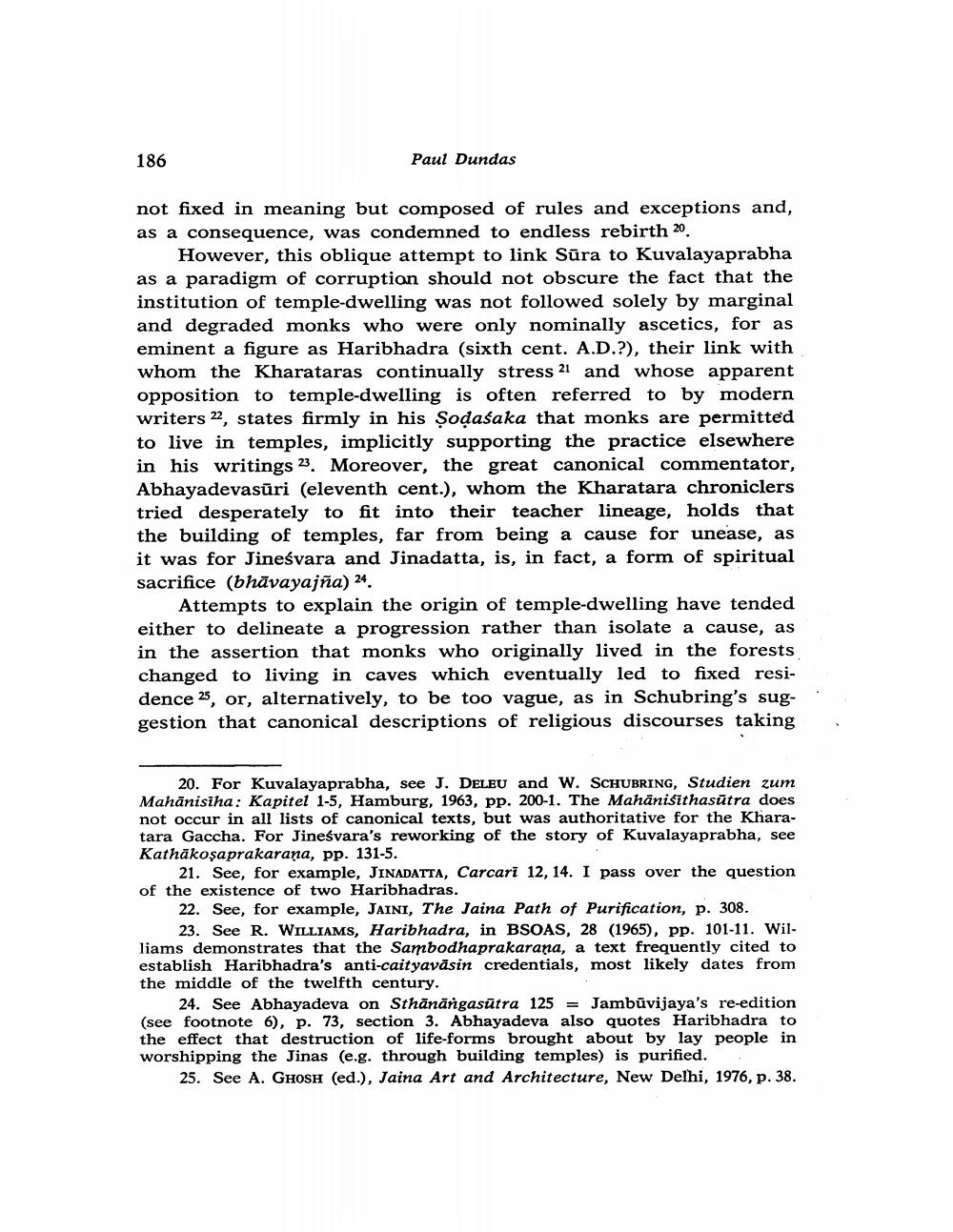________________
186
Paul Dundas
not fixed in meaning but composed of rules and exceptions and, as a consequence, was condemned to endless rebirth 20.
However, this oblique attempt to link Sūra to Kuvalayaprabha as a paradigm of corruption should not obscure the fact that the institution of temple-dwelling was not followed solely by marginal and degraded monks who were only nominally ascetics, for as eminent a figure as Haribhadra (sixth cent. A.D.?), their link with whom the Kharataras continually stress 21 and whose apparent opposition to temple-dwelling is often referred to by modern writers 22, states firmly in his şodaśaka that monks are permitted to live in temples, implicitly supporting the practice elsewhere in his writings 23. Moreover, the great canonical commentator, Abhayadevasūri (eleventh cent.), whom the Kharatara chroniclers tried desperately to fit into their teacher lineage, holds that the building of temples, far from being a cause for unease, as it was for Jineśvara and Jinadatta, is, in fact, a form of spiritual sacrifice (bhāvayajña) 24.
Attempts to explain the origin of temple-dwelling have tended either to delineate a progression rather than isolate a cause, as in the assertion that monks who originally lived in the forests changed to living in caves which eventually led to fixed residence 25, or, alternatively, to be too vague, as in Schubring's suggestion that canonical descriptions of religious discourses taking
20. For Kuvalayaprabha, see J. DELEU and W. SCHUBRING, Studien zum Mahānisiha: Kapitel 1-5, Hamburg, 1963, pp. 200-1. The Mahānisithasūtra does not occur in all lists of canonical texts, but was authoritative for the Kharatara Gaccha. For Jineśvara's reworking of the story of Kuvalayaprabha, see Kathākoşaprakarana, pp. 131-5.
21. See, for example, JINADATTA, Carcari 12, 14. I pass over the question of the existence of two Haribhadras.
22. See, for example, JAINI, The Jaina Path of Purification, p. 308.
23. See R. WILLIAMS, Haribhadra, in BSOAS, 28 (1965), pp. 101-11. Williams demonstrates that the Sambodhaprakarana, a text frequently cited to establish Haribhadra's anti-caityavāsin credentials, most likely dates from the middle of the twelfth century.
24. See Abhayadeva on Sthānāngasūtra 125 = Jambūvijaya's re-edition (see footnote 6), p. 73, section 3. Abhayadeva also quotes Haribhadra to the effect that destruction of life-forms brought about by lay people in worshipping the Jinas (e.g. through building temples) is purified.
25. See A. GHOSH (ed.), Jaina Art and Architecture, New Delhi, 1976, p. 38.




